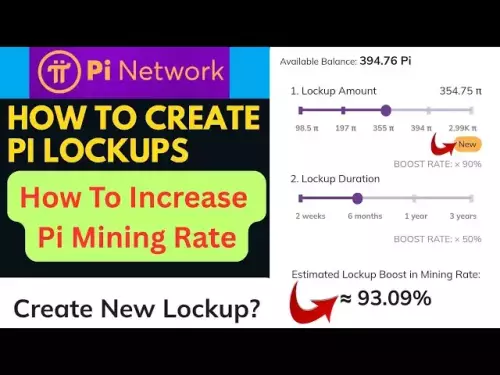XRPL 3.0 is set to redefine institutional DeFi by introducing a native lending protocol, privacy tokens, and liquid staking, fostering compliant and efficient blockchain finance.

Ripple's XRPL 3.0: Revolutionizing Institutional DeFi with Lending Protocol
Ripple is making waves with its XRPL 3.0 upgrade, designed to bring institutional-grade decentralized finance (DeFi) to the forefront. This update introduces a native lending protocol, privacy tokens, and liquid staking, aiming to create a compliant, efficient, and innovative blockchain finance model. Keep reading to find out what it all means!
XRPL 3.0: A New Era for Institutional Lending
The heart of XRPL 3.0 lies in its native lending protocol. This feature, expected to launch this year, is set to facilitate low-cost, regulation-compliant credit markets directly on the XRP Ledger. By integrating lending into the ledger, Ripple aims to simplify credit operations while upholding institutional standards. Single-Asset Vaults will aggregate liquidity, issuing vault shares and automating loan management, ensuring transparency for regulated institutions.
Privacy and Compliance: A Balancing Act
Privacy is a major focus, with the introduction of zero-knowledge proof (ZKP) functionality. Expected in early 2026, Confidential Multi-Purpose Tokens (MPTs) will enable privacy-preserving collateral management while adhering to compliance standards. ZKP allows institutions to verify KYC compliance without exposing personal details, balancing privacy with necessary monitoring and auditability.
Liquid Staking and Institutional Growth
Liquid staking is another key component. At XRPL Seoul 2025, mXRP, a liquid staking token, was introduced, offering returns between 6 and 8 percent. This allows participants to earn on their XRP holdings while maintaining liquidity and interoperability with decentralized applications. It’s all about making DeFi more accessible and appealing to institutional investors.
The Competitive Landscape
Of course, XRPL isn't the only player in the DeFi space. It faces competition from established ecosystems like Ethereum, Solana, and Avalanche. The success of XRPL 3.0 hinges on attracting liquidity, building investor confidence, and effectively integrating new features on a global scale.
My Take: A Bold Step Forward
Ripple's approach is particularly interesting. By focusing on compliance and privacy, Ripple is directly addressing the concerns of institutional investors. The integration of ZKP and MPTs shows a clear understanding of the need for both confidentiality and regulatory visibility. If XRPL can successfully deliver on these promises, it could very well become a leading platform for institutional DeFi. The $1 billion monthly stablecoin transaction volume already suggests a promising start.
Conclusion: The Future is Bright (and Compliant)
XRPL 3.0 represents a significant step towards integrating traditional finance with blockchain-based DeFi. With its focus on compliance, innovative lending protocols, and privacy-enhancing technologies, Ripple is positioning itself as a key player in the future of digital finance. Who knows, maybe we’ll all be managing our loans on the XRP Ledger soon enough! It will be an interesting journey for sure!














































































